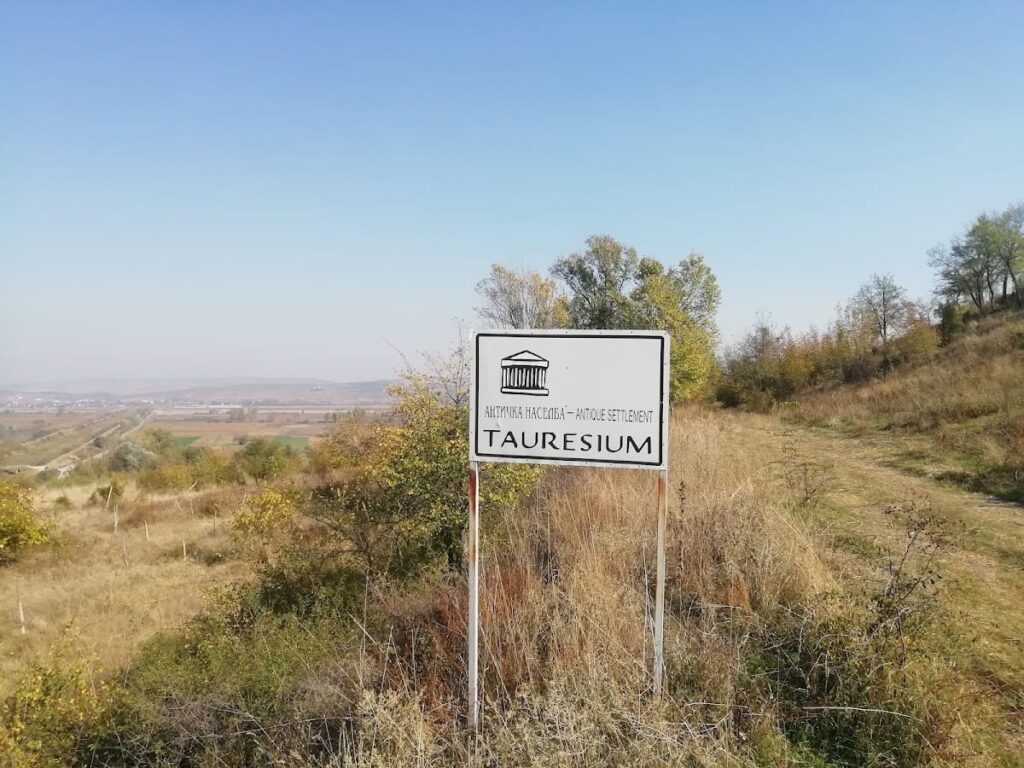Tauresium Archaeological Park: Birthplace of Emperor Justinian I in North Macedonia
Visitor Information
Google Rating: 4.2
Popularity: Very Low
Google Maps: View on Google Maps
Official Website: en.wikipedia.org
Country: North Macedonia
Civilization: Byzantine, Roman
Remains: City
History
Tauresium Archaeological Park is located near the village of Taor, about 20 kilometers southeast of Skopje in North Macedonia. The site was originally established during the Roman period and is known as the birthplace of Byzantine Emperor Justinian I, who ruled from around 482 to 565 CE. It was also the birthplace of Theodahad, an Ostrogoth king born in 480 CE.
The earliest archaeological layers date Tauresium’s foundation to the 4th century CE. It developed as a fortified settlement with continuous occupation through Late Antiquity. The site suffered significant damage during a major earthquake in 518 CE, centered near the nearby city of Skupi (modern Skopje). According to the historian Procopius, Justinian was born in the nearby fortress of Baderiana and later undertook the rebuilding of Tauresium after this earthquake. The settlement remained inhabited until the late 6th century, when invasions by Avars and Slavs led to its decline and eventual abandonment.
After a gap of about two centuries, Tauresium experienced renewed activity during the early medieval period, particularly in the 9th and 10th centuries. Archaeological finds from this time include coins, jewelry, weapons, and architectural fragments, indicating a revival of settlement and use.
The site of Baderiana, located roughly six kilometers east of Tauresium, is identified as the fortress mentioned by Procopius. It was occupied from the 4th to the 6th centuries and likely served as a military and administrative center connected to Tauresium.
Systematic archaeological excavations at Tauresium began in 2000 under the direction of archaeologist Kiro Ristov and the Skopje City Museum. These investigations have uncovered multiple layers of settlement, including remains from the Copper Age, Late Antiquity, and early medieval periods, providing a more detailed picture of the site’s history.
Remains
Tauresium covers about 1.6 hectares on a hilltop featuring an acropolis and two terraces. The Late Antique fortress has a roughly triangular shape, enclosed by defensive walls with corner towers and a bastion at the highest point. The walls are built from large cut stones joined with lime mortar, measuring about 1.6 meters thick. The eastern wall extends 70 meters, while the northern side is about 5 meters long. A rectangular tower stands at the northeastern corner, and a strong bastion tower crowns the summit.
A main entrance gate, approximately 1.7 meters wide, was discovered in the defensive wall. Evidence shows it once had a wooden door. Nearby, a funerary marble stele was embedded in the wall, suggesting reuse of materials or symbolic placement. The fortress remains visible today as ruins of walls, towers, and architectural fragments.
Excavations revealed several buildings within the settlement. One notable structure features an open colonnade aligned east-west, consisting of three rooms connected by a corridor opening onto an atrium, or central courtyard. The walls of this building stand about one meter high and are one meter thick, constructed from stone and lime mortar. Marble architectural elements such as three columns, bases, and capitals without decoration indicate it was a two-story building.
Another building with an atrium and three rooms has an irregular trapezoidal plan oriented north-south. Its floor was paved with construction bricks. In the late 6th to early 7th century, this building underwent modifications including closing the atrium openings, adding a bread oven, and building a massive wall with stairs leading to the defensive wall. These changes suggest adaptation to new uses or defensive needs.
At least eight residential houses have been identified west and south of the atrium building. Foundations and floors remain preserved, with some floors coated in light yellow purified clay over compacted gravel. Hearths and storage pits called pithoi were found inside certain houses. Artifacts recovered include kitchen and storage pottery, coins, jewelry, metal tools, weapons, weights, and agricultural implements, dating from the 4th to the late 6th century.
The site also contains a Late Antique necropolis, water supply and drainage systems, and fragments of early Christian marble columns decorated with Christian motifs on their bases and capitals. A significant find is a fragment of a pithos (large storage jar) mouth bearing the monogram seal of Emperor Justinian I, confirming the identification of Tauresium as his native town.







